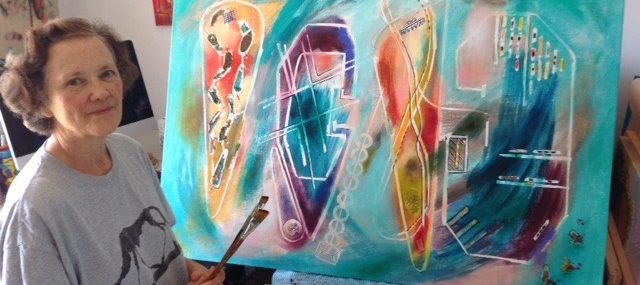Life in a Western Town by Lynda Fynn Dickinson
A recent video on the Royal Academy of Art, London’s David Remfry, Royal Academician, and his journey in art over many years was very inspiring. In it he shares with us the view that many artists need, for commercial survival, to create something that appeals to the public, and not what the artist themselves necessarily want to continue producing. I’ve enjoyed observing art which is decorative, or on subjects which are commercial, versus those artworks which have been created by the well-known innovators over time. Even Goya (1746-1828) , whose court paintings were practically the most-sought after in Spain in his time, might be better known for his dark and macabre etchings, like the Los Caprichos series, or “Dream of Certain Men” etc. It was these etchings that Goya really immersed himself in, even though his portrait paintings were his bread and butter. I recommend Robert Hughes’s book on “Goya” as a good insight into the artist, and the demons he faced. I found the etchings and aquatints in the Goya Museum, Zaragosa, one of the most wonderful artistic journeys, and went back several times to absorb the detail of the works. Alongside in a separate gallery hung works by Dali which parodied these works by Goya. It made for an “interesting”, and yet I felt, slightly irreverent by Dali, juxtaposition.
I have so enjoyed David Remfry’s work at the RA in recent years, and feel not only must he be painting what he really wants to paint, using his own developed language, but that he is well recognised and sought-after for his work. The work could almost be described at times as a cross-over between abstract and semi-representational, and is mysterious for the bits he leaves out: his work is described as “numinous” in the Royal Academy of Art Summer Exhibition catalogue of 2016. To leave out more than we put into an artwork, is inspirational for all artists.
Having watched many art programmes over the years, and read many books on art, it is interesting that even those famous artists, like Picasso and Matisse, whose work was a true expression of themselves, and well known as an extension of their identity, sometimes lies in secure vaults as commercial “investments” for the future. Somehow, we seem to have gone full circle: commerciality; discovery; innovation; commerciality.
Thank goodness for public galleries which make the work available for all of us to enjoy and revere.
My current body of work, in which I play with my own language, has me fully immersed, and here I share my favourite tool of the trade – an extremely worn scumbling brush!!!
